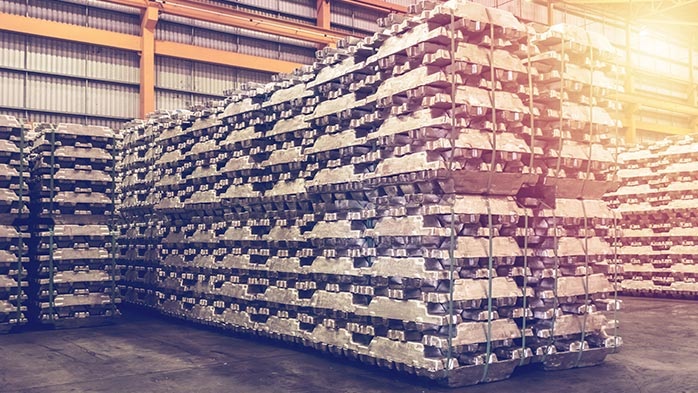Scrap Processors

November 12, 2024
Aluminum market faces mixed signals
Written by Gabriella Vagnini
Thinking about 2025 when it comes to aluminum, the concerns seem to be stemming from its upside, not the usual downside. Influenced by supply squeezes, production levels in China, and varying demand across global regions. While some investors might think “buying the dip” is a good move, the current landscape suggests caution might be a wiser strategy. Here’s a closer look at the key factors at play.
Alumina price surge and supply issues
One major driver of change is the recent price hike in alumina, the raw material needed to produce aluminum. Alumina is up roughly 60% to the aluminum price. Alumina is becoming a big bite off of the cost structure. The market for alumina is getting squeezed, one of the drivers is due to Guinea suspending bauxite exports, a critical source of supply, especially for China. With alumina prices nearing record highs at up more than 20%, smelters in China and beyond are facing serious pressure. The pressure in China starts with probability of layoffs due to these high prices. However, China is still supplying steady goods to Russia, so one may question why they are even considering layoffs if business seems to be rolling in? Yes, Guinea was a main source for China, but what happened to China’s two-month stockpile it had? Yes, although it has been ages and it probably has weeds growing taller than the stockpile itself, this could be their saving grace. And in Australia, production issues at refineries operated by big key players like Rio Tinto and Alcoa are adding to the strain. This scarcity could lead to production cuts, potentially impacting aluminum availability if costs keep climbing and production doesn’t keep up. Lastly let’s not fail to mention the force majeure aluminum producer Alcoa has issued, due to its problems with shipping bauxite from Brazil. While it seems that Alcoa did this to alleviate any potential disasters from possible customer lawsuits on failure to deliver, we can’t help but add this to the pile of issues alumina is currently facing.
China’s production and demand
China is keeping its aluminum output strong. At the end of Q3 China produced roughly 3.7% over the same period as last year. But demand inside China isn’t keeping up, and recent economic stimulus efforts from Beijing haven’t had the impact many were expecting. There’s a lot of uncertainty over whether the government will take further action to boost demand, which leaves market analysts wondering if prices will stabilize or continue to fluctuate.
U.S. and European market imbalances
Over in the U.S., it’s a different story. Aluminum supply here is outstripping demand, and it shows: the Midwest Premium, a key price marker, is sitting low compared to the first half of last year, reflecting the weak demand. Recent port strikes created brief supply disruptions, but they weren’t enough to absorb the oversupply. In Europe, aluminum prices have seen slight bumps, mostly due to higher demand for specific products, but concerns about economic slowdowns keep weighing on the overall demand picture.
Speculative investing and price volatility
Lately, speculative investing has also stirred the pot. Funds have been pouring into aluminum futures, pushing prices up in the short term. But given the supply challenges and inconsistent demand across different regions, the future remains hazy. Speculators may see opportunities, but for anyone watching the fundamentals, it’s clear the risks are high.
The bottom line
While aluminum prices have seen some upward momentum, largely fueled by speculative moves and rising production costs, the global supply and demand imbalance remains a problem. We’re likely to see more fluctuations as raw material availability, especially alumina, continues to play out, and as we wait to see whether China’s economic policies will bring any real change to demand. So, for now, diving in to “buy the dip” might not be the best strategy given the current market uncertainties.




